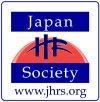By Debbie Howard, President, Japan Market Resource Network and President Emeritus, The American Chamber of Commerce in Japan
"There are only four kinds of people in the world: those who have been caregivers, those who are currently caregivers, those who will be caregivers and those who will need caregivers.” Former US First Lady Rosalynn Carter
Much has been written about the impending crisis created by the dual challenge of an aging workforce and the parent care issue. In fact, literature dating back to the 90s reveals a number of well-researched articles that articulate the magnitude of the risks corporations all over the world have to face with a rapidly graying workforce. The facts speak for themselves.
In the US, for instance, HR Magazine found among others that more than 50 million people have provided care for a chronically ill, disabled or aged family member or friend. US businesses lose as much as $34 billion annually to employees who have to care for aging family members.
Even in countries such as Japan, Germany and the UK where government provides universal healthcare, it is the family who is still expected to provide long term care-giving needs to the elderly.
Interestingly, in a recent roundtable discussion hosted by The Japan HR Society (JHRS) it was learned that:
* In some companies, employees opt to leave or retire because they feel they cannot commit to both their jobs and providing parent care at the same time;
* Because job security is currently a top priority among employees, they are less likely to raise concerns related to elderly care for fear they may be asked to make a choice;
* While companies tend to address the issue on a case-to-case basis, a more systematic and pro-active approach is necessary; and,
* As Japan comes face to face with its aging population, the need for companies to provide more than what is legally mandated becomes more apparent.
HR professionals recommend various ways to tackle the issue. Companies may consider long term approaches such as “At-Risk Workforce Needs Assessment” which involves surveying all employees to gain a better understanding of their awareness of parent care issues (including productivity issues and time-off requirements among those employees with parent care issues) and developing an action plan for addressing specific employee educational needs with respect to parent care challenges.
They can also look into short term solutions such as “Parent Care Luncheon Program Series” comprised of 1-hour programs on such topic as crafting parent care crisis kits, reducing parent care emergency situations, and developing a parent care strategy.
Practical and easy-to-implement luncheon series programs appear to be the most common among companies, indicating that a comprehensive elderly health care system is still in its infancy. Nevertheless, it is clear that major companies---Japanese or foreign---are making slow but steady progress in instituting programs to address the challenges concerning the aging workforce and the challenges of elderly care in Japan. Let’s do hope, however, that this momentum is sustained and get serious attention in the HR agenda.--DH
Tags:
Other posts by The Japan HR Society:






